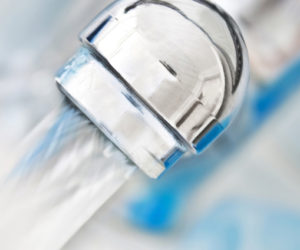 Published by http://www.H2OEnergyFlow.com, Written by, Samuel K. Burlum, Investigative Reporter and author Published on 12/30/16, a SamBurlum.comExclusive
Published by http://www.H2OEnergyFlow.com, Written by, Samuel K. Burlum, Investigative Reporter and author Published on 12/30/16, a SamBurlum.comExclusive
Source: The true cost and price of quality drinking water varies depending on the source of the fresh clean drinking water, the geographic location to where water is being delivered, who controls and/or supplies the water, and the different ways water is consumed. There are other “costs” that we as a society must consider as part of the price to pay for water; ones that may not be necessarily reflected on a balance sheet. Here we will take a look at some of the long term “costs” as well as the real price we pay for clean drinking water.
When everyday consumers think in terms of the price of water, generally we consider what it costs for our personal purchasing use. That could either be what we pay at the register in a convenience store or supermarket, or in the event an individual subscribes to a public water source, the cost would be on the price of the water by the gallon/s delivered and used in their household. Those costs are just the tip of the iceberg in what we really pay as a society for the privilege of quality, clean, fresh drinking water. Some of these costs move beyond the balance sheet and typical accounting measures. So if we add up what an individual will pay per liter or gallon and we add that number to all of the indirect factors that won’t show up in a financial spreadsheet, the cost and price we pay for clean drinking water is much higher.
Over the past decade, major corporations have taken over the market to distribute water for profit, resulting in a significant increase in the cost to purchase this natural resource. There are two models which are utilized in the distribution of public-municipal water. The first model is where the “people” own the water supply. This is when the local water supply is controlled and maintained by a local municipal water authority, usually comprised by a committee of either elected or appointed officials. This model is a true municipal public utility, where prices per gallon delivered to households are mandated to be capped where the regulatory body does not make a profit. The price per gallon varies depending on the geographic location of the municipality. For example, in New Jersey, the Borough of Sparta charges residents $4.50 per 1000 gallons for this service.
The second public water source is where a local or regional municipality or government contracts water to be supplied to residents through a major corporation. This model has come with controversy, since most people believe that having access to quality, clean, fresh drinking water is a human right, and are against companies profiting from supplying the very basic of all human needs. Companies like Suez and US Water are private corporations that make contracts to supply local municipalities with water, and are responsible to ensure the water they are delivering meets or exceeds regulatory guidelines. The debate comes when concern for such public-private partnerships arise, with the need for assurance that better water quality for less money will occur. In some cases, residents saw a major increase in their monthly water bills. For example, cities contracted with United Water saw a price increase up to over $1 more per 1000 gallons versus when water was under the entire authority of the local municipality. United Water’s average rate is $5.50 per 1000 gallons.
A private well is deemed the most cost effective way for a homeowner to obtain a clean fresh water source. The use of wells has been abandoned in preference of public water in most post-modern day era suburban communities. There are still large pockets of suburban communities and vast tracks of rural settlements maintaining that private wells provide the property owner a guaranteed source of quality fresh water. The cost of a well varies on how deep a well must be drilled before the drill bit taps into the underground water table or aquifer. In the northeast, installation of a well could range from $15 to $30 per foot for one that ranges from 100 to 400 feet below the surface. There is still the additional cost of the well pump, piping, and maintenance, which also has a cost factor, ranging from $2500 to $10,000, depending on the amount of hardware you need. Typically, a well pump life span is 15 years and can cost an average $700 to replace.
If you have either municipal water and/or your own well, you will most likely need some sort of filtration system to capture any elements not desired in your fresh water supply. If your municipal public water source has aged infrastructure or if your private well water is hard and full of iron or other mineral content, you will want to have some sort of water softener system and filter system installed. The cost of these systems can range from hundreds of dollars to thousands of dollars, depending on the degree of mitigation you expect in solving these issues.
According to Sundale Research, 66% of people in the United States purchase the majority of their drinking water either from a home delivery service or from the grocery store. The average five-gallon container will retail for $8 each. Households will also spend money on ready-to-go single use bottled water containers which vary in cost, depending on size and quality. Most average brands of water will offer a 24 pack of 16/20 ounce bottles for $4.99 each. If you demand a structured water, or specialty water, you can expect to pay up to that price per bottle. It depends on your personal preference and the quality of water you select.
Having gained an understanding of the price of water in the wallet, what consideration is to be given regarding the cost and price of our society’s demands for clean, fresh water for the environment? With economic drivers at the forefront, many industries push to be the first in line for water over millions of people who need clean water in their homes for personal use. The agriculture industry depends on irrigation from water sources for growing food crops, many times tapping into the same water supply meant for homes and local communities, even during times of drought and dry seasons. Manufacturing facilities depend on water for processing a variety of products including metal, plastic, paper, clothing, as well as other food products. Eventually the stresses of these demands put pressures on Mother Nature beyond the available supply.
When this happens, and local water sources are depleted, officials must resort to sourcing water from distant locations, usually passing the cost of additional infrastructure and delivery to the final consumer. Such is the case in California, where water shortages have become the normal situation and freshwater must be imported from neighboring states. Much of the Southwest depends on water which originates from the Colorado River for drinking water. In an area that has experienced a rise in temperatures and limited rain fall, the Colorado River is already at its limit. Diverting more water from the river to suburbs of California comes with a premium price per gallon to consumers.
Pollution also costs us in the long run. The cost of clean-up of an oil or chemical spill is an open checkbook, for there is no way to truly know the price per pollutant that makes its way into water supplies, lakes, rivers and streams. These costs are beyond the monetary figures, have drastic effects on eco-systems, and influence other localized cottage industries that make their living dependent upon the land around them. Fishing and gaming are affected when oil spills and other pollutants are distributed into these sensitive habitats, limiting the supply of clean food. Agriculture is also affected, because polluted water is unhealthy for growing local crops. The soil that surrounds these contaminated waterways becomes tainted and unable to sustain life. What price can you put on a track of land or what once was a clean freshwater supply, which no longer can be used because of man’s own irresponsibility in handling waste not meant for nature?
Polluted water comes with a heavy price tag to our personal health. It is estimated by the World Health Organization that polluted water sources affects 1.8 billion people each year and dirty drinking water is responsible for the majority of disease in undeveloped and/or developing countries. Things such as dysentery, diarrhea, and cholera are not just costly but can have deadly consequences when not addressed. 500 thousand deaths are related to diseases and illnesses that originate from polluted water. In these same regions of the world, sources of drinking water and waste water (sewage) are passed along in the same waterway.
There is an ancient Indian proverb which says, “We do not inherit the Earth from our Ancestors, we are borrowing it from our children.” This reflects the attitude and the approach we should be considering in lessening our environmental impact on water supplies, for we are putting our own future generations at risk of having to deal with the price of the consequences of our actions and decision of today’s adult generations. The cost is drastic. When we do not soberly consider water preservation and water conservation, we are putting at risk the health and well-being of future generations. There is no price tag you can assign to the moral responsibility we have to assure that our children and our children’s children can enjoy the same basic human right to clean fresh drinking water that we have.
Samuel K. Burlum is an investigative reporter who authors articles related to economic development, innovation, green technology, business strategy, and public policy concerns. Burlum is also a career entrepreneur who lends his expertise as a consultant to start-up companies, small businesses, and mid-size enterprises, providing advisement in several areas including strategic business planning, business development, supply chain management, and systems integration. He is also author of The Race to Protect Our Most Important Natural Resource-Water, Main Street Survival Guide for Small Businesses, and Life in the Green Lane-in Pursuit of the American Dream.


 December 7, 2016| Sam Burlum |
December 7, 2016| Sam Burlum |